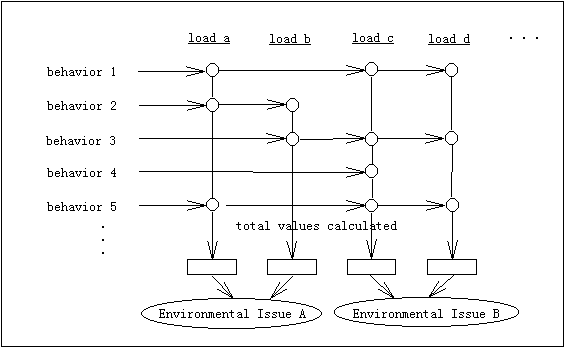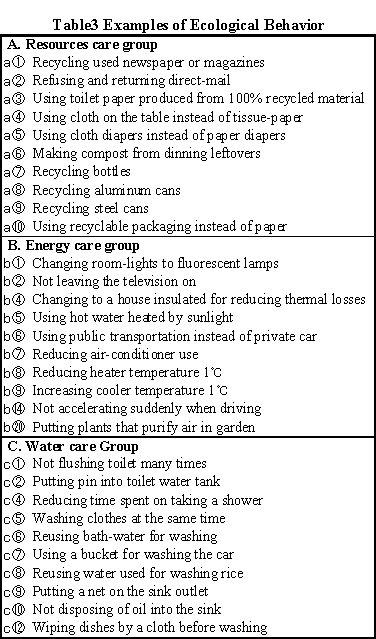
3. Eco-Life Index (ELI)
3.1 purpose
Eco-Life Index(ELI) focuses on citizen's behavior and activity. It has used for encouraging sensitive environmental behaviors on individuals or households. By using it, everyone can check their own behaviors and know the amount of required behaviors to reduce environmental loads. Miyagi Prefecture and Chiba City have used it as life-style guidance for citizen, and two city or ward used on the environmental plan for calculating policy effects for encouraging ecological behaviors.
3.2 content

ELI is consist of Three groups: resources care group, energy care group, and water care group. Each group has many ecological behaviors (table 3). These behaviors reduce seven representative environment loads: wood consumption, water consumption, waste generation, CO2 emission, NOx emission, SOx emission, and BOD emission.
Furthermore, environmental loads are connected to seven environmental issues: Deforestation, Global Warming, Acidification, Water Resources, Waste, Air Pollution, Water Pollution. Thus individual eco-behaviors are finally aggregated as contribution to solution on seven environmental issues(figure 8).
@
@
@

Figure 8 Relation of Eco-behaviors and Environment Issues
3.3 method
ELI measures eco-behaviors through a questionnaire divided by four categories: galways doh, gsometimes doh, goccasionally doh, grarely doh ( the activity rate is assumed 0.9, 0.65, 0.35, 0.1). The amount of loads reductions on each individuals or households are calculated by multiplying the activity rate with reduction value per unit on translate table.
Furthermore, the amount of individuals or households reductions are aggregated to a whole city by each environmental loads. The reduction rate of total environmental loads on whole city are calculated as the score of seven environmental issues.

@